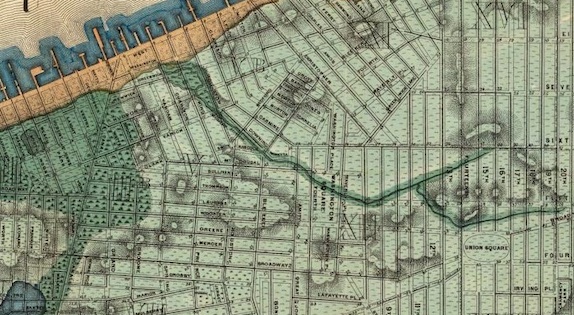Imagine if your fear of spiders,Naked Reunion (1993) heights or confined spaces vanished, leaving you with neutral feelings instead of a sweat-soaked panic.
A team of neuroscientists said they found a way to recondition the human brain to overcome specific fears. Their approach, if proven in further studies, could lead to new ways of treating patients with phobias or post-traumatic stress disorder (PTSD).
SEE ALSO: Your brain needs a break — these apps are here to helpThe international team published their findings Monday in the journal Nature Human Behaviour.
About 19 million U.S. adults, or 8.7 percent of the adult population, suffer prominent and persistent fears at the sight of specific objects or in specific situations, according to the National Institute of Mental Health.
 Original image has been replaced. Credit: Mashable
Original image has been replaced. Credit: Mashable PTSD, another type of anxiety disorder, affects about 7.7 million U.S. adults and can develop after a person experiences trauma, such as sexual assault or military combat.
The authors of Monday's study said they wanted to develop alternatives to existing treatments for anxiety. Aversion therapy, for instance, involves exposing patients to their fear with the idea that they'll learn dark rooms, tall buildings or cramped elevators aren't harmful after all.
The new approach combines artificial intelligence (AI) and brain scanning technology in a technique called "Decoded Neurofeedback."
For their experiment, neuroscientists worked with 17 healthy volunteers. Rather than test participants' existing phobias, the researchers created a new, mild "fear memory" by giving volunteers a brief electrical shock when they saw a certain computer image.
Via GiphyThe brain scanner monitored volunteers' mental activity and was able to spot signs of that specific fear memory. Using AI image recognition methods, researchers said they developed a fast and accurate method to read that fear memory information.
"The challenge then was to find a way to reduce or remove the fear memory, without ever consciously evoking it," Ben Seymour, a co-author and a neuroscientist at the University of Cambridge's Engineering Department, said in a press release.
Seymour said the team realized that volunteers' brains still showed signs of that specific fear memory, even when they were resting and not consciously aware of the fear.
Since scientists could quickly decode those brain patterns, they gave participants a small amount of money, so that the fear memories would become associated with rewards. Volunteers were told their cash reward reflected their brain activity, but they didn't know how. The team repeated this procedure over three days.
 Original image has been replaced. Credit: Mashable
Original image has been replaced. Credit: Mashable "In effect, the features of the [fear] memory that were previously tuned to predict the painful shock were now being re-programmed to predict something positive instead," said Ai Koizumi, the study's lead author and a researcher at the Center of Information and Neural Networks in Osaka, Japan.
At the end of the reward therapy, the neuroscientists showed volunteers the same pictures that were previously associated with the electric shocks. The brain's fear center, the amygdala, no longer showed any enhanced activity.
"This meant that we'd been able to reduce the fear memory without the volunteers ever consciously experiencing the fear memory in the process," Koizumi said in the press release.
The study's authors noted that their experiment was relatively small and said further research was needed to turn this approach into a verified clinical treatment for patients with phobias or PTSD. Still, they said they hoped "Decoded Neurofeedback" could help patients avoid the stress of exposure therapies or the side-effects of drug-based therapies.
Topics Artificial Intelligence Mental Health
 Schumer’s Warning
Schumer’s Warning
 Corgi wearing a mermaid tail is the real queen of the sea
Corgi wearing a mermaid tail is the real queen of the sea
 AmazonFresh will now deliver your groceries directly to your car
AmazonFresh will now deliver your groceries directly to your car
 Apple is testing a way to completely turn off location tracking in iOS
Apple is testing a way to completely turn off location tracking in iOS
 Paul Murray on “That’s My Bike!” by Rachel Nolan
Paul Murray on “That’s My Bike!” by Rachel Nolan
 The internet is very confused by this shirt at the Trump Tower gift shop
The internet is very confused by this shirt at the Trump Tower gift shop
 Lazy little bird hitches a ride on uninterested cat
Lazy little bird hitches a ride on uninterested cat
 Report: Apple to unveil new, cheaper iPhone 'as early as March'
Report: Apple to unveil new, cheaper iPhone 'as early as March'
 Ghost River by Will Hunt
Ghost River by Will Hunt
 Night Shift is now available on your Mac so you can finally get some damn sleep
Night Shift is now available on your Mac so you can finally get some damn sleep
 On the Shelf by Deirdre Foley
On the Shelf by Deirdre Foley
 Everything coming to Amazon Prime Video in February 2020
Everything coming to Amazon Prime Video in February 2020
 Facebook just lost a court fight to cover up possible privacy abuses
Facebook just lost a court fight to cover up possible privacy abuses
 Can Fisker Ocean deliver on its vision of a cheap Tesla alternative?
Can Fisker Ocean deliver on its vision of a cheap Tesla alternative?
 Geoff Dyer Tonight! by Nicole Rudick
Geoff Dyer Tonight! by Nicole Rudick
 Everyone should always have their read receipts turned on
Everyone should always have their read receipts turned on
 Report: Apple to unveil new, cheaper iPhone 'as early as March'
Report: Apple to unveil new, cheaper iPhone 'as early as March'
 Etsy shops filling the Baby Yoda toy void hit with takedown notices
Etsy shops filling the Baby Yoda toy void hit with takedown notices
 Helen Simpson on ‘In
Helen Simpson on ‘In
 J.K. Rowling perfectly explains why the Trumps wouldn't be in Slytherin
J.K. Rowling perfectly explains why the Trumps wouldn't be in Slytherin
Castro the CopyeditorNASA telescope discovers a bizarre, halfIs the Great American Lawn “Camp”?Leonard Cohen: “Poetry Is Just the Evidence of Life”Kafka Feared Sex Because of Venereal Disease, His Biographer SaysIn Which Alberto Giacometti Scopes Out Some French CarsBecoming Invisible: An Interview with Mary RuefleStaff Picks: Teddy Wayne, Terrance Hayes, Notes on BlindnessHey, Look, Everyone—It’s the Medieval Wound Man!NASA telescope discovers a bizarre, halfThe Invisibility Cloak: An Interview with Ge FeiNine Paintings by Nicholas KrushenickStaff Picks: Teddy Wayne, Terrance Hayes, Notes on BlindnessCover Story: Mario Carreño and Concrete CubaOn the “Mrs Thrale” Bit in “Meditations in an Emergency”Win Free Tickets to 92Y’s Celebration of Albert MurrayWei Tchou Takes to the Streets for NYC’s Trump ProtestsAlan Watts and the Age of Environmental AnxietyThere Are Plenty of Things to Despair About. E.g.: Giraffes Face ExtinctionClassic Attitude: Paintings by Helen Lundeberg Best coffee maker deal: Grab the Cuisinart Single Shop the iPad Air and iPad 11th generation for their lowest NYT Strands hints, answers for April 7 NYT Connections Sports Edition hints and answers for April 4: Tips to solve Connections #193 Wordle today: The answer and hints for April 5, 2025 Microsoft celebrates 50 years with major Copilot announcements and new features A star factory at the heart of our galaxy is mysterious and important Beats Pill: Get it for $50 off at Amazon Wordle today: The answer and hints for April 6, 2025 People are panic buying iPhones ahead of possible price hikes, report claims Best Sony deal: Save $31.99 on the ULT Field 1 portable speaker at Amazon Best iRobot Roomba j7+ Robot Vacuum deal: Save $300 at Best Buy Asus TUF A16 Gaming Laptop deal: Save $400 at Best Buy Cozy games can help your mental health. Here's how. NYT mini crossword answers for April 5, 2025 'Eric LaRue' review: Judy Greer devastates in Michael Shannon's directorial debut NYT Connections Sports Edition hints and answers for April 8: Tips to solve Connections #196 Hubble captures a stunning cradle of stars in neighboring galaxy Bayern Munich vs. Inter Milan 2025 livestream: Watch Champions League for free The 'boom boom' aesthetic fetishizes wealth in an era of chaos
1.6256s , 10115.3828125 kb
Copyright © 2025 Powered by 【Naked Reunion (1993)】,Pursuit Information Network